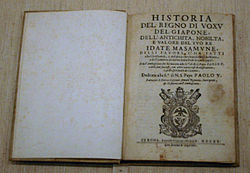
Back مصدر ثانوي Arabic İkinci dərəcəli mənbə Azerbaijani মাধ্যমিক উৎস Bengali/Bangla Font secundària Catalan Sekundärliteratur German Sekundara literaturo Esperanto Fuente secundaria Spanish منبع دست دوم Persian Sekundäärilähde Finnish Source secondaire French

In scholarship, a secondary source[1][2] is a document or recording that relates or discusses information originally presented elsewhere. A secondary source contrasts with a primary, or original, source of the information being discussed. A primary source can be a person with direct knowledge of a situation or it may be a document created by such a person.
A secondary source is one that gives information about a primary source. In a secondary source, the original information is selected, modified and arranged in a suitable format. Secondary sources involve generalization, analysis, interpretation, or evaluation of the original information.
The most accurate classification for any given source is not always obvious. Primary and secondary are relative terms, and some sources may be classified as primary or secondary, depending on how they are used.[3][4][5][6] A third level, the tertiary source, such as an encyclopedia or dictionary, resembles a secondary source in that it contains analysis, but a tertiary source has a different purpose; it aims to elaborate a broad introductory overview of the topic at hand.[1][7]
- ^ a b "Primary, secondary and tertiary sources". University Libraries, University of Maryland.
- ^ "Secondary sources Archived 2014-11-06 at the Wayback Machine". James Cook University.
- ^ "Primary and secondary sources". Ithaca College Library.
- ^ Kragh, Helge (1989), An Introduction to the Historiography of Science, Cambridge University Press, p. 121, ISBN 0-521-38921-6,
[T]he distinction is not a sharp one. Since a source is only a source in a specific historical context, the same source object can be both a primary or secondary source according to what it is used for.
- ^ Delgadillo, Roberto; Lynch, Beverly (1999), "Future Historians: Their Quest for Information", College & Research Libraries, 60 (3): 245–259, at 253, doi:10.5860/crl.60.3.245,
[T]he same document can be a primary or a secondary source depending on the particular analysis the historian is doing
, - ^ Monagahn, E.J.; Hartman, D.K. (2001), "Historical research in literacy", Reading Online, 4 (11), archived from the original on 2012-02-13, retrieved 2022-01-21,
[A] source may be primary or secondary, depending on what the researcher is looking for.
- ^ Richard Veit and Christopher Gould, Writing, Reading, and Research (8th ed. 2009) p 335